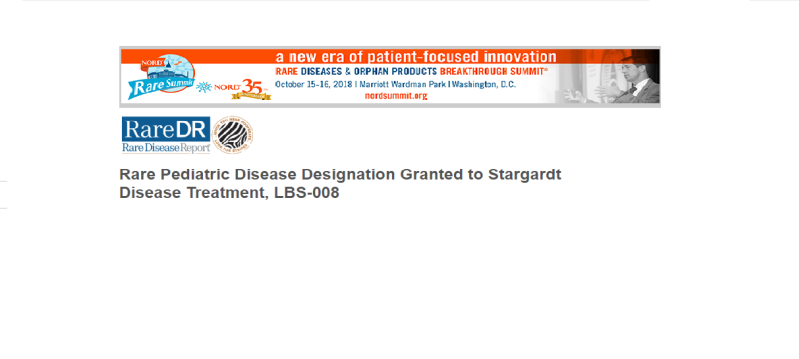 Rare Pediatric Disease Designation Granted to Stargardt Disease Treatment, LBS-008
Rare Pediatric Disease Designation Granted to Stargardt Disease Treatment, LBS-008
“We continue to be encouraged by the regulatory support for LBS-008 and the opportunities provided by the Rare Pediatric Disease designation and the Priority Review Voucher Program,” stated Tom Lin, PhD, MBA, MMed, CEO of Lin Bioscience, in a recent statement.
LBS-008 is a first-in-class oral therapy that has been developed to inhibit the buildup of toxins in the eye that cause Stargardt Disease and atrophic age-related macular degeneration (dry AMD), which is a condition that damages the retina.
To date, a phase 1 clinical trial evaluating LBS-008 has been completed.
Previously, the FDA granted LBS-008 an orphan drug designation in October 2017. The treatment is the first graduate candidate from the National Institutes of Health (NIH)’s Blueprint Program for Neuroscience Research.
Stargardt disease is a genetic and untreatable disease characterized by a mutation in the ABCA4 gene. The mutation can cause progressive retinal cell death and permanent loss of vision since it leads to the accelerated formation and accumulation of toxic vitamin A dimers in the retina. In childhood and during adolescence, permanent vision loss is can occur.
There are currently no FDA-approved treatments for Stargardt disease, which affects approximately 1 in 8-10,000 people, according to the NIH.
As there is no treatments for the disease, ophthalmologists encourage those with the disease to wear hats and dark sunglasses when in bright light in an effort to reduce the buildup of lipofuscin.
There are several devices available that can assist those with Stargardt disease in performing their daily activities. One example, according to the NIH is low-vision aids, which include handheld lenses, electronic reading machines, or closed-circuit video magnification systems. Health care providers should be cognizant of these services and should also offer counseling and occupational therapies to those with Stargardt disease as the condition is known to have a significant emotional impact on those affected by it.



